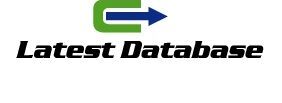In today’s digital landscape, website speed and user experience (UX) are crucial factors that directly impact your online success. Slow-loading websites frustrate visitors, increase bounce rates, and can negatively affect your search engine rankings. Meanwhile, a seamless and intuitive UX keeps visitors engaged, encourages repeat visits, and ultimately boosts conversions.
Improving both website speed and UX is essential for retaining users and creating a positive brand impression. The faster your site loads and the easier it is to navigate, the more likely users are to stay, explore, and take action.
Practical Ways to Boost Website Speed
One of the most effective ways to improve india phone number list website speed is optimizing your site’s technical performance. Start by compressing images without sacrificing quality, as large image files are a common cause of slow load times. Use modern file formats like WebP for better compression.
Minimize the use of heavy scripts and plugins that can bog down your site. Streamline your code by eliminating unnecessary CSS and JavaScript and leveraging asynchronous loading for non-essential elements. Additionally, utilize browser caching and content delivery networks (CDNs) to reduce server response times and deliver content faster to users worldwide.
Regularly test your website speed using tools like Google PageSpeed Insights or GTmetrix to identify bottlenecks and monitor improvements over time.
Enhancing User Experience Through Design and Navigation
User experience goes beyond speed. A clean, responsive design that works well on all devices is fundamental. Ensure your site layout how to start a complete website reindexing? is intuitive, with clear navigation menus and well-organized content that helps visitors find what they need quickly.
Incorporate readable fonts, sufficient white space, and contrasting colors to make your content easy on the eyes. Use clear calls to action (CTAs) to guide users toward desired outcomes, such as making a purchase or signing up for a newsletter.
Continuous Testing and Optimization
Improving website speed and UX is an ongoing process. Use analytics tools to track user behavior and identify areas where visitors may be dropping off or experiencing difficulties. Conduct A/B testing to experiment with different designs, content placements, and functionalities to discover what resonates best with your audience.
Solicit user feedback to gain insights into their needs and pain points. By continuously refining your site based on data and user input, you can taiwan lists create a faster, more enjoyable browsing experience that drives long-term results.






